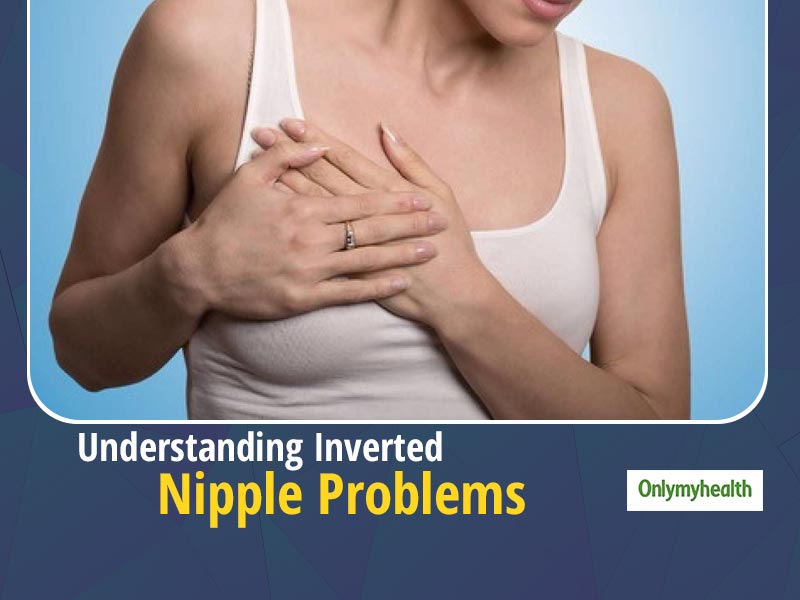
This condition arises when the nipple is sunken at the breast instead of outside. This is a prevalent condition, which occurs in about 1 in every 30 women. Breastfeeding can be difficult or impossible due to the inverted nipple. This often affects both breasts, but some patients may have this only in one breast. A better understanding of this problem and information on available solutions can save you from the problems caused by it. Wondering why does it happen? The nipple is made up of milk ducts and muscle cells. Due to fibrosis, these tubes become smaller and this imbalance, pulls the nipple inwards, even if the muscle is trying to lift it outward. Prolonged inverted nipple deformity is a developmental pathology, which is not severe, but one should be aware of the sudden inversion of the normal nipple and seek medical consultation.
Table of Content:-

Breastfeeding and Inverted Nipples
When it come to lactating mothers, various reasons can affect the breastfeeding. But, this is very much possible with inverted nipples. Breastfeeding may be possible even when the nipples are inverted, but this depends on the severity or grade of the nipple inversion. Inverted nipples are divided into three categories:
Flat or Grade 1 Inverted Nipple Deformity: This grade has a very low inversion, and in this condition, it can be manually lifted by finger pressure around the nipple. There is minimal or no fibrosis in this condition. In this milk, ducts can be completely normal, and the patient can breastfeed. There is no need for treatment, and the nipples can be placed in a normal position through simple manual stretching.

Indentured or grade 2 inverted nipple deformity: There may be some difficulty in pulling such nipples, and they come back to their position once the pressure is removed. Breastfeeding may also be possible in this condition. However, there may be difficult for the baby to take the milk, making it uncomfortable for the mother and the child. Nipple suction devices can sometimes help, but this is not entirely correct. Nipple suction devices can sometimes help, but this is not completely helpful. One can also opt for advanced plastic surgery techniques and should be done before getting pregnant or at least before the third trimester.
Tucked-in or grade 3 inverted nipple deformity: This deformity is the most severe type, in which the nipple cannot be elevated. It is caused by severe fibrosis of the milk ducts. Breastfeeding is not possible for women suffering from this. Women with this type of nipple deformity often have difficulty keeping the nipple clean. This deformity can be corrected by surgery, in which short milk ducts have to be divided. But even after surgery, that woman cannot breastfeed the child.

Also Read: This Is How Breastfeeding Reduces The Risk Of Breast Cancer, Explains Dr Mane
Inverted nipple deformity is prevalent, it can be emotionally disturbing and can make breastfeeding difficult. In most cases, many women are unaware of it until they become pregnant. However, long term results can be obtained from surgical correction.
Read more articles on Women's Health
How we keep this article up to date:
We work with experts and keep a close eye on the latest in health and wellness. Whenever there is a new research or helpful information, we update our articles with accurate and useful advice.
Current Version